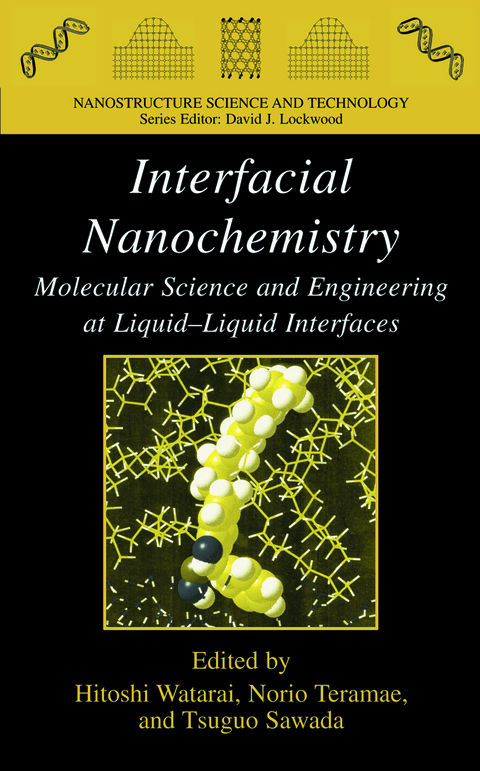
Interfacial Nanochemistry
Springer-Verlag New York Inc.
978-1-4419-3457-4 (ISBN)
Second Harmonic Generation at Liquid/Liquid Interfaces.- Vibrational Sum-Frequency Spectroscopic Investigations of Molecular Interactions at Liquid/Liquid Interfaces.- Observation of Dynamic Molecular Behaviour at Liquid/Liquid Interfaces by Using the Time-Resolved Quasi-Elastic Laser Scattering Method.- Direct Force Measurement at Liquid/Liquid Interfaces.- A Molecular Theory of Solutions at Liquid Interfaces.- Electrochemical Processes at Aqueous/Organic Solution or Aqueous/Membrane Interfaces.- Electrochemical Instability at Liquid/Liquid Interfaces.- Electron Transfer at Liquid/Liquid Interfaces.- Mass Transfer and Reaction Rate in the Nano-Region of Microdroplet/Solution Interfaces.- Single Molecule Diffusion and Metal Complex Formation at Liquid/Liquid Interfaces.- Molecular Recognition of Ions at Liquid/Liquid Interfaces.- Photochemistry at Liquid/Liquid Interfaces.- Development of Surfactant-Type Catalysts for Organic Synthesis in Water.- Bioseparation Through Liquid—Liquid Interfaces.
From the reviews:
"Interfacial Nanochemistry is a book on the chemistry of liquid-liquid interfaces … . This book brings together contributions that would otherwise stand separately. … It is mainly addressed to the scientific specialist … . this book gives a valuable overview of state-of-the-art research on chemistry at liquid-liquid interfaces and the theoretical methods and experimental techniques for their study. It should be on the bookshelf of researchers active in the field." (Thomas Fischer, Journal of the American Chemical Society, Vol. 127 (28), 2005)
"Watarai has brought together a series of contributions that provide an insight into this new area of study at the boundaries of analytical, synthetic, surface, and colloid chemistry." (Materials Today, June, 2005)
| Erscheint lt. Verlag | 2.2.2011 |
|---|---|
| Reihe/Serie | Nanostructure Science and Technology |
| Zusatzinfo | 153 Illustrations, black and white; XIV, 321 p. 153 illus. |
| Verlagsort | New York, NY |
| Sprache | englisch |
| Maße | 165 x 248 mm |
| Themenwelt | Naturwissenschaften ► Chemie ► Analytische Chemie |
| Naturwissenschaften ► Chemie ► Physikalische Chemie | |
| ISBN-10 | 1-4419-3457-X / 144193457X |
| ISBN-13 | 978-1-4419-3457-4 / 9781441934574 |
| Zustand | Neuware |
| Haben Sie eine Frage zum Produkt? |
aus dem Bereich


